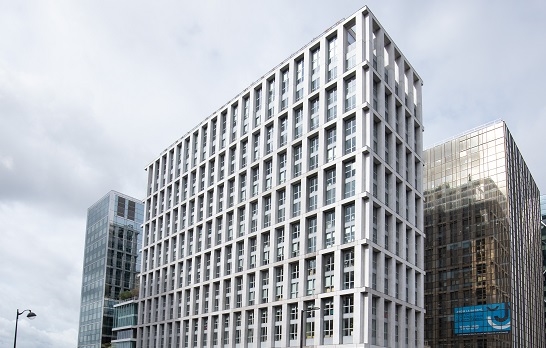TT strikes back in patent case
The trial, which stretched into its fourth week, was expected to conclude on 4 October with closing arguments and a possible verdict from the nine person jury the following day.
TT brought in several expert witnesses in the rebuttal phase, all of which testified that MD Trader patents could not be invalidated by the examples of prior art introduced by E-Speed. E-Speed introduced several pieces of prior art that allegedly preceded the critical 2 March, 1999 date when MD Trader was created including GLs TradePad, Japanese ISV Midas Kapitis Market Trader and order entry software from Tokyo Stock Exchange (TSE) and Tokyo International Financial Futures Exchange (Tiffe).
TTs attorneys attacked the credibility of GL TradePad evidence, allegedly created by the Paris-based ISV in late 1998 and included in its overall software package called GL Win 4.31. Those versions were presented to Chicago Mercantile Exchange (CME) in December 1998 and sold to Cargill Investor Services in February 1999, E-Speed said.
But David Klausner, a software forensic expert for TT, told the court that among the evidence produced by E-Speed there was no version of TradePad prior to 2 March, 1999.
Klausner said he analysed 11 CME hard drives and the 36 CDs that GLs former trading application manager Jean-Cedric Jollant said he kept as back-up files on TradePad and a GL demonstration computer. Klausner said he found no evidence of TradePad in GL Win 4.31 or 4.50.
E-Speed attempted to deflect such a findings by pointing out practical evidence such as the January 1999 letter from CME which specifically criticized TradePad as useless to our local traders proved that TradePad existed prior to MD Trader.
E-Speed also presented several manuals from GL which showed that TradePad existed in version 4.31. However, those manuals did not illustrate all of the functionality of TradePad, a point which diminishes the value of such evidence.
TT further pressed its case by outlining just how exact TradePad and other prior art evidence must be to invalidate TTs patents with its expert witness, Craig Pirrong, a professor with the University of Houston. In legal terminology, it is called anticipation or art that was there before an invention.
Neither TradePad nor Midas Kapiti anticipate claims in the TT patent, Pirrong said. No single piece of prior art contains every element of the asserted claims. It has to be every element. Proving anticipation is like bowling, you have to roll a strike. You essentially have to prove that every element was there in the prior art. If you leave only one pin standing, there is no anticipation.
Pirrong said MD Trader allows users to preset the quantity of contracts and then allows them to set a price and a buy or sell with one single click of the mouse, also known in this case as single action. MD Trader also provides users with market depth and a list of working orders all on one window. GL Win 4.3 included market depth, but in a separate window.
TradePad required users to use a right click to set trade parameters and then a left click of the mouse to send the order. In Pirrongs view, that constituted two separate actions. In testimony and cross-examination that plunged the discussion into mind-numbing detail over the difference between one-click, two-click and right- and left-click order entry Pirrong and another TT expert witness, Christopher Thomas, held firmly that the TradePad method was not a single action.
E-Speeds technology expert Richard Ferraro testified in a deposition just weeks earlier that the right- and left-click methodology was two separate actions. But in court, he changed his opinion and said it was a single action.
Another key part of patent law and this case is obviousness which simply means that the elements in a patent are just that, obvious to anyone with expertise in that field. While much has been made in and outside of court about just how ubiquitous MD Traders static display of prices was before the invention, TTs experts claimed that MD Trader was revolutionary because it combined a set of common characteristics in the industry and provided a simple way in which to view and trade.
Thomas said combining a static ladder, which is found in GL, Midas Kapiti and the Tokyo exchanges software, with single action order entry, MD Trader was a revolution and pioneering invention.
If it was obvious, GL knew about static
Thomas, an equity trader, said it was akin to the Post-it note invention. Everyone knew about paper and glue, but no one had put the two together before Post-its inventor did.
For its part, E-Speed held that TradePads left- and right-click methodology is no different than a single- or double click.
E-Speed also brought in its own expert to estimate the amount of infringement damages that are at issue here. Daniel Slottje, senior managing director at FTI Consulting, told the court that TTs estimates of around $4.6m, revealed in the previous weeks hearing (see FO Wee 28/09/07) were way off because they take estimate trading volumes on incomplete data from users of eSpeed and Ecco software. He estimated the amount for both E-Speed and Ecco to be $455,831 to $595,079.
The case will be decided by a nine person jury, as one juror had to drop out. Whatever the outcome, it is expected that the losing party will appeal the case.
Found this useful?
Take a complimentary trial of the FOW Marketing Intelligence Platform – the comprehensive source of news and analysis across the buy- and sell- side.
Gain access to:
- A single source of in-depth news, insight and analysis across Asset Management, Securities Finance, Custody, Fund Services and Derivatives
- Our interactive database, optimized to enable you to summarise data and build graphs outlining market activity
- Exclusive whitepapers, supplements and industry analysis curated and published by Futures & Options World
- Breaking news, daily and weekly alerts on the markets most relevant to you



